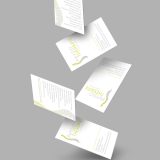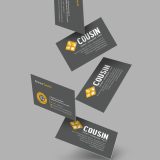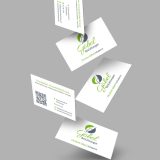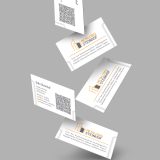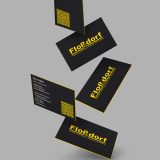Tips & Tricks No. 25
In the "neunmalklug" section, I publish tips, tricks and technical information about graphic and web design at irregular intervals. Today:
9 elements that should not be missing on any homepage
The homepage is much more than just the entry point to a website. It is the digital business card, the first point of contact - and often the decisive one. The decision is made within a few seconds: continue reading or jump off? As a web designer, I therefore make sure that certain elements are well thought out and clearly implemented right from the start.
Here are nine central building blocks that I consider together with my clients when designing each homepage:
- Visual introduction: hero motif, slider or strong visual language
The first glance is decisive - and it should be a good one. Whether it's a large-scale hero motif, a customised slider or a short video clip: together we choose the right visual element that gets to the heart of the website's message and draws visitors' attention. I make sure that design and technology work together perfectly - for a professional, inviting and brand-typical first impression.
- Clear address: Headline with value proposition
A homepage needs more than just a "Welcome" - it needs orientation. Together with my clients, I develop a concise headline that clearly shows what the company offers - and why this is relevant for the target group. A well thought-out introduction creates trust and arouses interest.
- Link to social media: show presence where the target group is on the move
Whether Instagram, Facebook, LinkedIn or YouTube - if you are active on social networks, you should also make these channels visible on your website. I integrate social media links, feeds or individual posts in such a way that they match the design and offer real added value. Together, we clarify which platforms make sense and how a link can be harmoniously integrated. The result is a coherent presence - across all channels.
- Service overview or offer teaser
What exactly does the company offer? Together, we prioritise the content that should be the focus - and I develop design solutions that present the services in a clearly structured and visually appealing way. Even complex topics can be made easily accessible with modular teasers, icons or short descriptions.
- Call to action
Whether it's an appointment, contact form or product page - it should be recognisable on the homepage what should happen next. Together, we define the goal of the page and I make sure that suitable call-to-actions are placed sensibly and implemented in a visually convincing way. This creates clear user guidance without detours.
- Current content, references or customer testimonials
A website is allowed to live - this conveys topicality and seriousness. Depending on the project, I develop suitable options for integrating news, selected references or customer opinions. Even if no news section is planned, content can be presented in a targeted manner so that it is effective - without the need for constant maintenance.
- Contact option or direct link
A good website makes it easy to get in touch. I make sure that all important contact options are clearly visible and can be used on mobile devices - whether as a button, as fixed information in the header or as a short form in the footer. Here too, we work together to decide what suits the target group and the project.

- Sophisticated navigation and user guidance
You can't see good menu navigation - you can feel it. I develop a clear structure that is logically organised and works intuitively on all devices. I pay attention to short click paths, comprehensible labelling and a clear hierarchy that makes visiting the site pleasant and goal-oriented.
- Technical basics: loading time, mobile view, data protection
Design only works if the technology is right. I pay attention to clean code, fast loading times, an optimised display on mobile devices and the implementation of all legally required elements - from the cookie banner to the privacy policy. The result is a reliable, future-proof website.
These nine elements form a strong foundation for homepages that are convincing - visually, structurally and technically. In every project, I develop customised solutions that precisely match the requirements and target groups of my clients. The order of the points is not a fixed rule, but results from the respective concept. The decisive factor is that the overall picture is right - in terms of function, design and content.





















